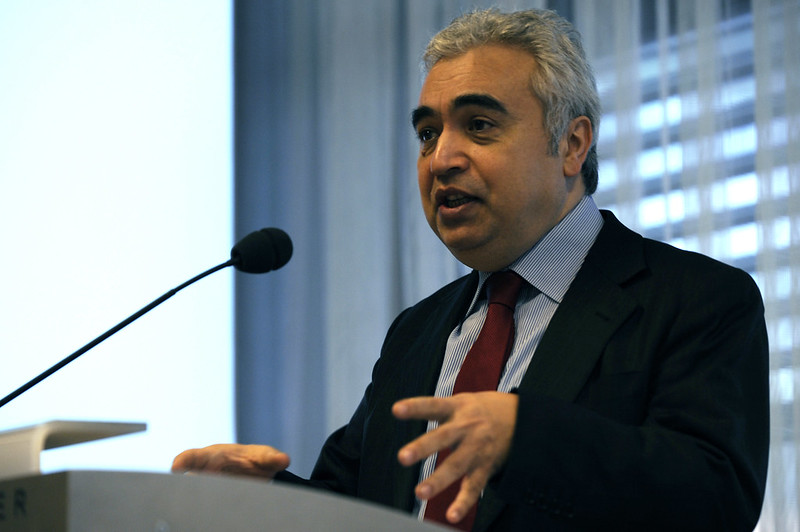The latest edition of the Renewables Market Report published by the International Energy Agency (IEA) has warned that if the higher costs which have driven up the price of solar panels this year continue throughout 2022, it could add $70 billion to the PV investment tab over the next five years. That would have been enough to install an additional 95 GW of solar capacity during the period, in terms of the industry's pre-supply-chain-shock prices, the Paris-based body has calculated.
As usual, the report presents a glass-half-full, glass-half empty appraisal, with the IEA anticipating the world will have installed a record volume of solar this year, spelling out how it would be possible to unlock an additional 25% of renewables plants on top of the huge volumes expected to 2026 … and then pointing out that would still not keep the world on track for net zero in 2050.
The prospects for Australian big solar
pv magazine Australia will be examining the outlook for large scale solar Down Under in a webinar on Wednesday. The team, with our partner Risen Energy Australia, will kick things off at 7 a.m. (CET) on Wednesday and you can sign up for the event here.
The international organization believes a record, near-160 GW of solar will have been added worldwide this year, with 17% more added than came online in 2020, and predicted the world will be adding 200 GW per year of photovoltaics in five years' time. Dealing with the familiar list of solar industry grumbles out to 2026 – sluggish permitting, grid integration issues, social acceptance, inconsistent policy, insufficient financial incentives, and costly developing-world finance – could raise that number to almost 260 GW per annum by the time the 2026 numbers are tallied, estimated the IEA.
The report's authors spell out the sort of effort required to achieve its ‘accelerated case' outlook for solar: China must define how its renewable portfolio standard – requiring generators to produce a specified volume of clean power – and the green certificates for renewable energy will function, and must support residential arrays after their feed-in tariff (FIT) is wound down this month. Even without those remedies, the IEA said, China will continue to lead the way with 1.2 TW of solar and wind capacity by 2026. That would be enough, wrote IEA executive director Fatih Birol, to ensure the nation “could well achieve a peak in its CO2 emissions well before 2030,” as a government target stipulates.
Remedies
Elsewhere, to further ramp solar deployment, according to the IEA, the U.S. should extend the investment tax credit for solar; India should get the finances of its power companies in order, extend grids and better incentivize small-scale, ‘distributed-generation‘ arrays; the EU should smooth permitting rules for participation in big solar capacity auctions, and expand the ambition of the procurement rounds, and could also support rooftop systems with its post-Covid recovery and resilience funding; Japan must smooth the transition from FITs to premium payments topping up the wholesale electricity price; and governments in the Middle East and North Africa could hold capacity auctions more often and expand their grids faster.
Even if that perennial wish list remains unfulfilled, the report's authors stated, the world can be expected to add almost 1.1 TW of solar over the next five years.
Popular content
In the best of all worlds for solar, however – an ‘accelerated-case' jamboree of friction-free permitting, bags of cash for rooftop solar, and grids accelerating at a rate of knots – the extra 25% of solar panels that would be installed would still have to double to keep the world on track for net zero in 2050.
And that's not to mention the IEA's fear a year of continued high panel prices – driven by more costly polysilicon, steel, copper, aluminum and shipping costs – could wipe out three year's worth of cost reductions, not to mention the threat of central banks raising interest rates and, thereby, project finance costs, or the plethora of trade measures imposed on solar imports. Those listed in the IEA study ranged from the duty slapped on solar panels by the U.S. in 2022 through to India's plan to apply a 40% duty on foreign panels and a 25% charge on solar cells, from April.
So the question remains, is our glass half-full or half-empty?
The views and opinions expressed in this article are the author’s own, and do not necessarily reflect those held by pv magazine.
This content is protected by copyright and may not be reused. If you want to cooperate with us and would like to reuse some of our content, please contact: editors@pv-magazine.com.


3 comments
By submitting this form you agree to pv magazine using your data for the purposes of publishing your comment.
Your personal data will only be disclosed or otherwise transmitted to third parties for the purposes of spam filtering or if this is necessary for technical maintenance of the website. Any other transfer to third parties will not take place unless this is justified on the basis of applicable data protection regulations or if pv magazine is legally obliged to do so.
You may revoke this consent at any time with effect for the future, in which case your personal data will be deleted immediately. Otherwise, your data will be deleted if pv magazine has processed your request or the purpose of data storage is fulfilled.
Further information on data privacy can be found in our Data Protection Policy.